March 02, 2017
Herzog & de Meuron’s LA Arts District Will Take Almost Two Decades to Complete
Sydney Franklin
Architizer.com
Last fall, Swiss firm Herzog & de Meuron proposed a massive mixed-use development on a megablock in Los Angeles’ Arts District — a design that’s unlike anything else in the low-rise neighborhood. This week a new environmental analysis study was released detailing the extent at which it will take to build out the 15-acre structure, estimating a whopper completion date of 2035.
That’s right. Eighteen years from now the growing hipster mecca of Downtown Los Angeles could have two huge new skyscrapers in its midst. If built today, they’d be the seventh and 11th tallest buildings in the city. 6AM, spearheaded by Irvine-based developer SunCal, is a $2 billion, multiphase project that features a pair of 58-story office towers.
Functioning as a city within a city, the project is designed to house a large grocery store, arts spaces, offices, a school and four-story underground parking garage when complete.
By the numbers, the 2,824,245-square-foot complex will contain 1,305 apartments, 412 hotel rooms, 431 condos, 253,514 square feet of office space, a near-30,000-square-foot school to accommodate 300 students, approximately 127,609 square feet of community-oriented retail and 22,429 square feet of art and gallery spaces. Mia Lehrer & Associates is set to take on the project’s landscape architecture, while AC Martin will serve as the executive architect.
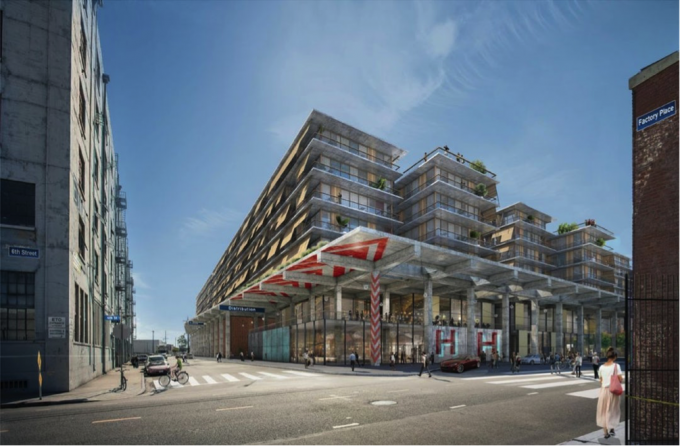
6AM by Herzog & de Meuron
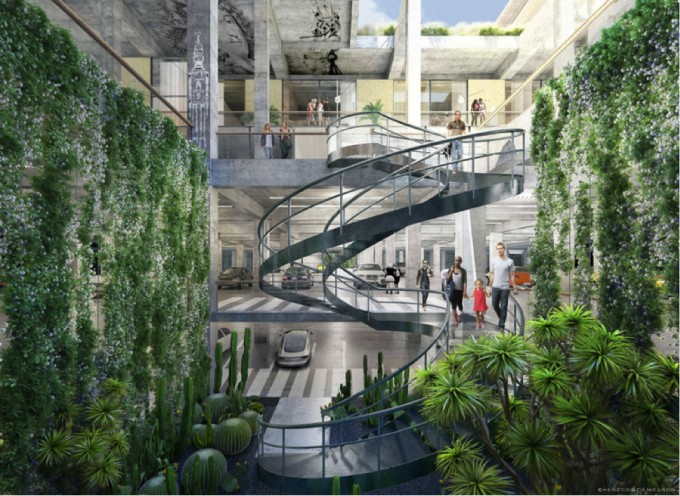
Parking Deck. Image Courtesy of Los Angeles Department of City Planning
The residential program at 6AM will sit atop a four-story-tall concrete platform with stores underneath that are easily accessible to the public. Exposed concrete piers hold the weight of the building’s linear second layer, which extends from Mill Street along Sixth Street. At Alameda Street, the towers stick straight up from the otherwise all-mid-rise construction.
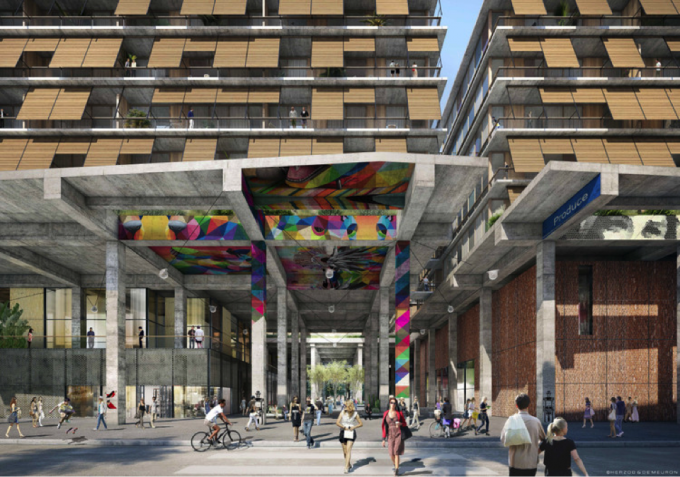
View of one of the project’s retail areas. Image Courtesy of Los Angeles Department of City Planning
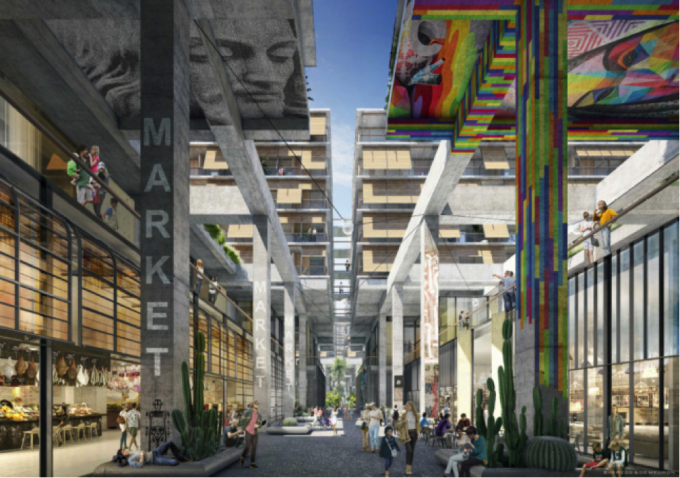
View of one of the project’s retail areas. Image Courtesy of Los Angeles Department of City Planning
The project aims to help revitalize Downtown, attracting an eclectic mix of urbanites to the site. From the most up-to-date renderings, the building’s core industrial aesthetic — it’s now a warehouse — fits in seamlessly with the district’s artsy edge. Images show exposed concrete infrastructure painted with murals. The gridded, open plan allows for ample light to seep down into the building’s first layer, while the apartments above, with terraced viewpoints, allow residents their own perspective of the activity below.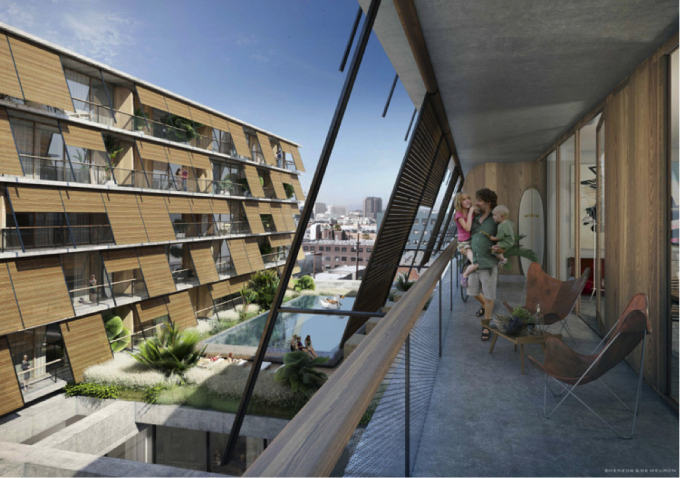
Last September in a critique of the design, the LA Times described 6AM as “muscular, intimate and porous all at once.” But its sturdy appearance is thrown off by the “needle” towers that give off a delicate, even transparent, vibe.
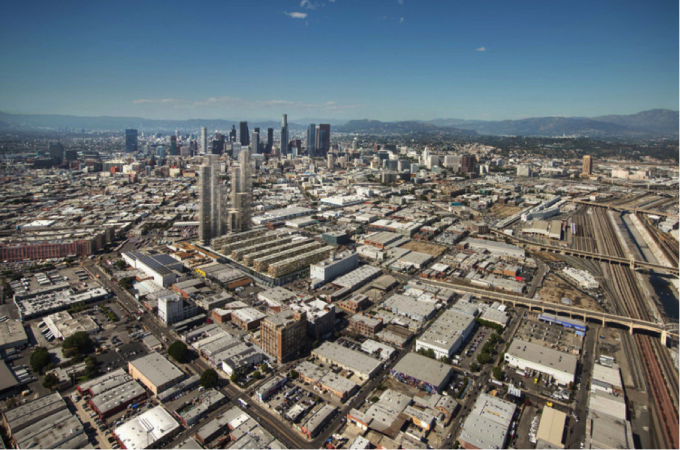
Skyline view. Image Courtesy of Los Angeles Department of City Planning
So much development is slated for the Arts District right now, most notably 670 Mesquit, a recently announced project by Bjarke Ingels Group. This similarly mixed-use development will sit at the opposite end of the neighborhood, flanking the Los Angeles River — a site also changing with a master plan by Frank Gehry.
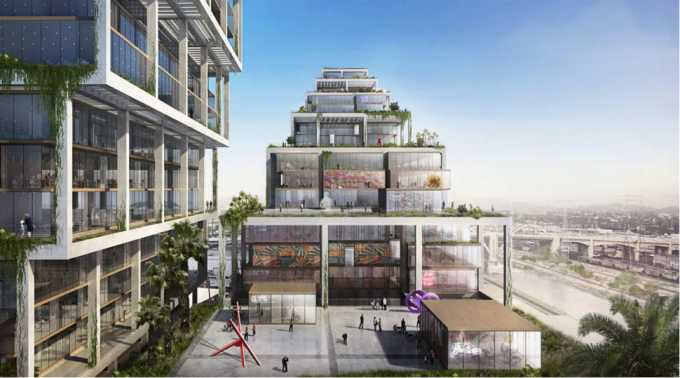
670 Mesquit by BIG
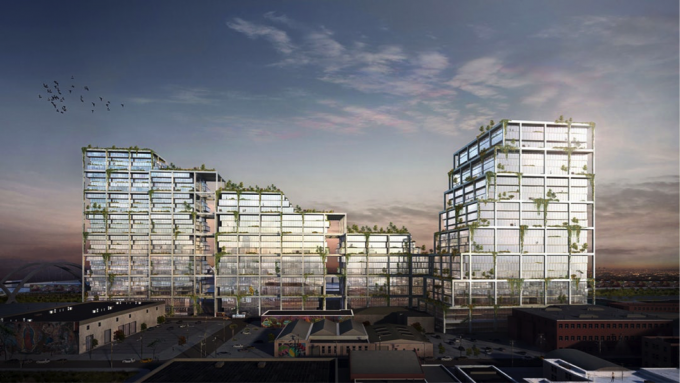
670 Mesquit by BIG
Like 6AM, the building is structured in a stepped formation featuring a cascading series of green terraces and open-plan commercial space at the bottom and is characterized by its giant, concrete framework.
As these new projects pick up in the neighborhood, the city is working on revamping its vague development policies to prevent gentrification and displacement. As a result, 6AM and 670 Mesquit are subject to Measure JJJ, a law passed last November that requires residential developments to use local union labor and include a specific amount of affordable housing units. In addition, Los Angeles voters will soon consider the Neighborhood Integrity Initiative, a measure that would place a two-year moratorium on projects requiring general-plan amendments in local land-use law from city planning.
Both superstructures break the district’s barrier of low-rise construction. If they are built, this could mark a significant turning point for the development of Los Angeles — but it might take a while. Phase 1 construction on 6AM is scheduled to start in 2018 with a final completion date of 2035. The timeline for 670 Mesquit is yet to be determined but will likely be revealed in the next few months.
As such, ambitious designs with lengthy schedules are more likely to be subject to multiple modifications. 6AM, as well as 670 Mesquit, could look significantly different and promise different outcomes for the Arts District upon completion in the next five to 20 years. But this is the nature of the architectural process for such grand interventions.
For now, it’s important to recognize the best part about these proposals: They force the city into a larger conversation about development policy, the preservation of a neighborhood’s character and how to build for the future in a sustainable, inclusive way. While Los Angeles’ Arts District might not need several new towers atop two mega-long projects, any effort to enhance a community with better housing and better access to the arts is worth looking into — no matter how long it takes.
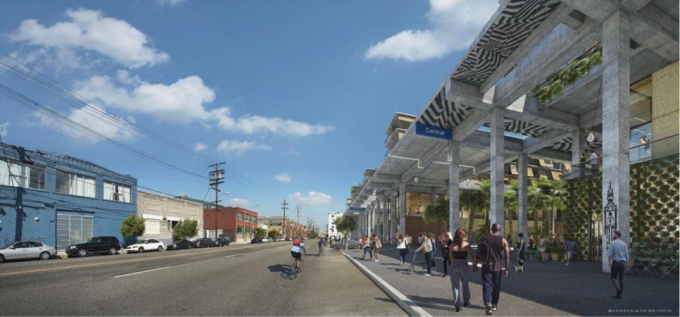
6AM by Herzog & de Meuron


